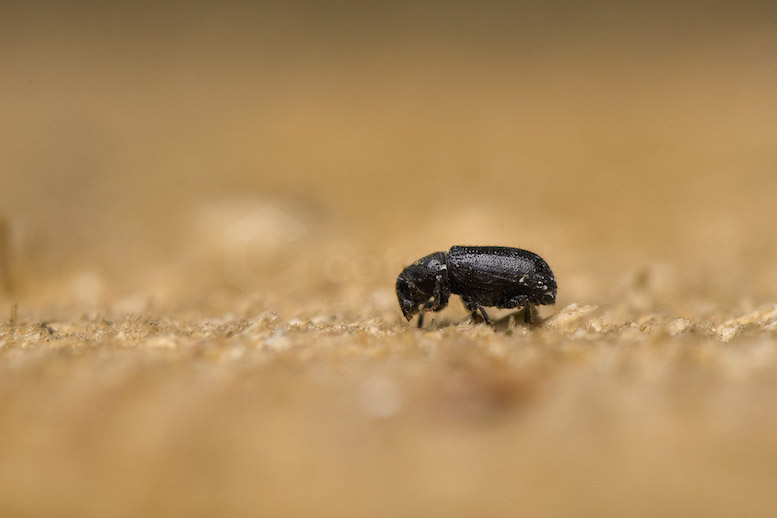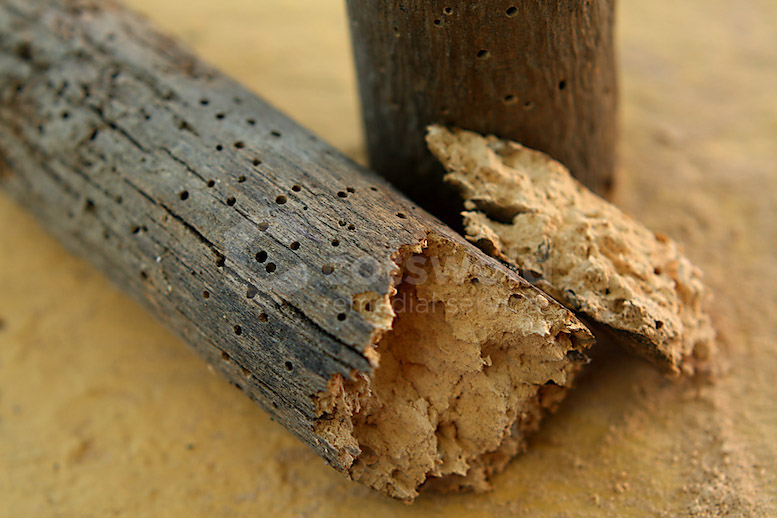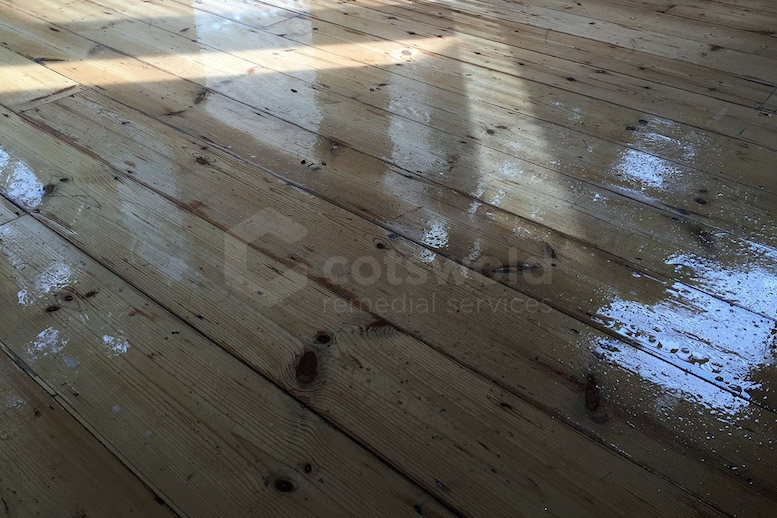Woodworm Treatment in Cheltenham & Gloucestershire
What is woodworm?
A woodworm infestation means that wood boring beetles are feeding on the timber of your property. They could be the common furniture beetle, the death watch beetle or wood boring weevils - the tell-tale signs include holes and piles of wood dust, but the damage runs deeper....
What happens if woodworm is left untreated?
If you don't act, woodworm will and may continue to cause serious structural damage to your property. Fortunately, we can treat woodworm effectively and while assessing the situation we can let you know if they have caused damage that needs repairing.
How will you treat the problem?
It's vital that we identify the type of infestation correctly to avoid costly ineffective treatments being used.
Our fully qualified surveyor will accurately identify the problem - or put your mind at rest if it isn't woodworm.
If treatment is required, we apply highly effective low-odour, water-based insecticide to joists, wall plates, bearers, sub-floor timbers and the underside of floorboards. For the latter, we generally have to lift some of floorboards carefully for access to underfloor voids.
How long will it take? Will I be inconvenienced?
Depending on the results of our survey, treatment usually takes between a few hours and a day.
Because we use the latest low-odour, low toxicity process, you and your pets will be home again within hours.
Is the treatment covered by a guarantee?
Our woodworm treatments also include a meaningful 10-year guarantee, and for a small additional fee we can provide you with complete protection we can offer you a fully secured guarantee by the Guarantee Protection Insurance Company Limited. This scheme has been hailed as "a landmark in the field of consumer protection" by the Director General of Fair Trading. This will provide complete cover for you and any subsequent owners of the property and is only available to members of the GPI.
Have I got woodworm?
Woodworm have a life cycle - they enter the wood, lay their eggs, eat away at the wood and eventually leave.
You can identify their presence by the appearance of exit holes a few millimetres in diameter, along with dust (fine wood shavings) the burrowing process creates. However, this may not mean you have a current (or live) infestation, it may be that the woodworm left long ago leaving damage behind.
One of the first places you will notice a woodworm infestation may not actually be on the wood itself as woodworm once out of the wood, fly to a source of light - it is common to find woodworm near the proximity of your window and window sills. The best time to spot woodworm is between the months of March and September

What are the different types of woodworm?
There is a whole host of different types of woodworm and it takes a specialist to identify them - these are the most common:
Common Furniture Beetle (Anobium punctatum)
These beetles are small and brown about 3 to 5mm in length and they attack the sapwood of softwoods and hardwoods. Infestations appear as round holes approximately 1 -2mm in diameter and the dust they create has a gritty texture.
Death Watch Beetle (Xestobium rufovillosum)
This insect is often associated with historic buildings and usually affects oak and the sapwood of hardwoods that are damp or have been affected by fungal decay, embedded timbers are particularly susceptible. Infestations appear as holes around 3mm, often with extensive tunnelling and dust. They are about 6 to 9mm long and a chocolate brown in colour.
Wood Boring Weevils (Pentarthrum huttoni)
These beetles are associated with the damage in damp and decaying wood, particularly timber already rotted by cellar fungus. Infestations can spread to adjacent healthy wood, and are most commonly seen in damp skirting boards and embedded joist ends.
The tunnelling in sapwood tends to run along the grain and the dust is sticky. Adults are small, 3 to 5mm in length and brown and black.





